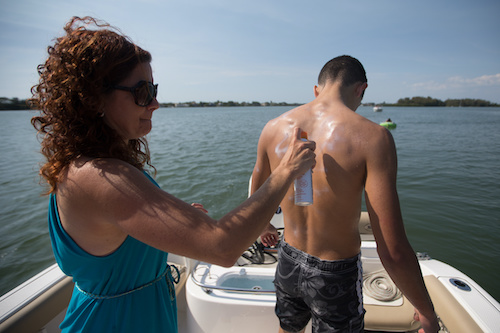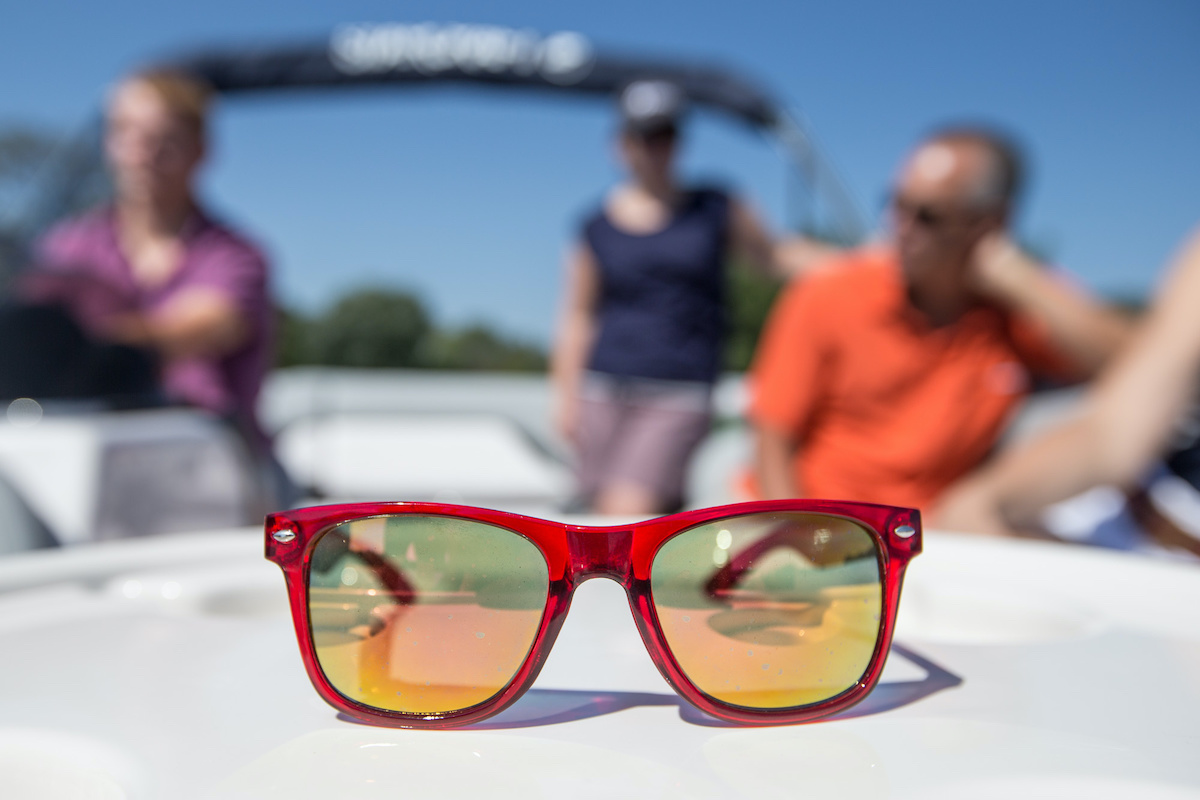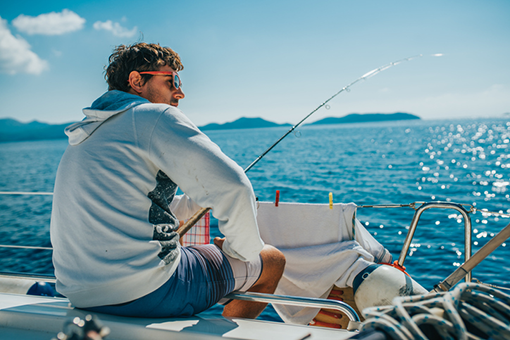Sun safety is crucial for all boaters. While spending a sunny day on the boat is enjoyable, it's vital to be aware of the potential problems caused by the sun.
Sunburn discomfort is just one concern; other issues include the risk of skin cancer, sun spots, and premature aging due to overexposure to ultraviolet (UV) rays. However, following proper sunscreen and sun-safety techniques can significantly reduce the damage and allow you to still enjoy your time on the water.
In this post, we'll review the top sunscreen and general sun safety tips every boater should remember this season.
5 Essential Sunscreen Tips for Boaters
1. Apply sunscreen to any exposed skin.
2. Remember to reapply every two hours, after swimming, or when sweating excessively, as protection diminishes over time.
3. Choose between sprays, lotions, or rub-on sticks based on what works best for you and encourages regular reapplication.
4. Remember commonly neglected areas like your lips, hair part, tops of ears and feet, and the backs of your legs. Additionally, use a lip balm with at least SPF 15.
5. Apply sunscreen 15 to 30 minutes before going out in the sun to allow proper absorption. Aim for an amount that could fill a shot glass to cover an average adult's body.
Best Sunscreen for Boaters:
Modern sun products are designed to prioritize protection by limiting the amount of UV rays (both UVA and UVB types) that reach your skin.
While UVB was traditionally considered more harmful due to sunburn and skin cancer, UVA rays are also damaging, causing long-term skin aging, wrinkles, and sunspots.
Before heading out on your boat, choose a "broad-spectrum" sunscreen that protects against both types of radiation. The American Academy of Dermatology recommends a water-resistant, broad-spectrum sunscreen with a sun protection factor (SPF) of at least 30 or higher.
Sunscreens can be physical or chemical in type; learn more about them in the sections below:
Physical Sunscreens:
Physical sunscreens, with zinc oxide and/or titanium dioxide as active ingredients, act as a barrier on the skin. They are suitable for sensitive skin but may leave a whitish residue.
Chemical Sunscreens:
Chemical sunscreens containing active ingredients like oxybenzone, avobenzone, octisalate, octocrylene, homosalate, and octinoxate, absorb the sun's rays and usually rub into the skin without leaving a visible residue. However, they may irritate the skin.

Sun Protective Clothing and Eyewear
In addition to sunscreen, sun-protective clothing is gaining popularity among boaters. These items include shirts, pants, swimwear, broad-brimmed hats, neck and face gaiters, and arm sleeves.
Sun-protective clothing
These items are rated based on their "ultraviolet protection factor" (UPF), indicating how much of the fabric's UV radiation is blocked.
For example, a UPF 50 shirt allows only 1/50 of UVA and UVB rays to pass through. Look for UPF clothing that is breathable, moisture-wicking, and has a comfortable, loose fit to avoid feeling clammy. Flatlock stitching enhances comfort by lying flat against the skin and reducing chafing.
Sunglasses:
Remember to protect your eyes with full-coverage sunglasses that block harmful UV rays. Polarized lenses are an excellent choice for boaters as they significantly reduce glare from the water.
Utilize Your Boat's Built-In Sun-Protection Features
Many boats have sun protection features that you should take advantage of! Bimini tops are standard on numerous models, providing shade to those below while allowing good air passage.
If your boat doesn't have one, consider installing a Bimini top, as they are relatively inexpensive and easy to set up. Hardtops and T-tops also offer sun protection to the captain and passengers in the cockpit.
Some hardtops even have awning-like extensions that can be extended for additional coverage.
Conclusion: Sun Safety is Crucial When Spending a Day on the Water
By following these sun safety tips, you can significantly reduce the damage caused by the sun while still enjoying your time on the water. Remember, protecting your skin from harmful UV rays is not just about immediate comfort; it's a long-term investment in your health and well-being. So, before you set sail, take the necessary steps to stay safe under the sun and enjoy your boating adventures to the fullest.
You Might Also Like:
- Life Jackets, Vests & PFDs: Choosing the Right Fit
- Weather Safety Tips for Boaters
- Boat Safety Checklist & Safety Equipment List
- Watersports Safety Guide
- Find the Right Boat for You
Editor's Note: This article was updated in May 2023.


